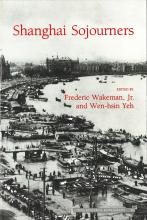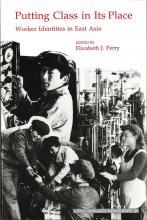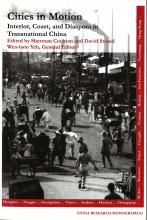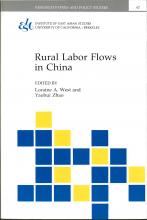City of Working Women
City of Working Women
Weikun Cheng
Situating laboring-class women in the larger context of the political liberalization and the profound social and economic transformations in late-Qing and early Republican Beijing, this book presents a nuanced picture of women's potentials and possibilities, and their dangers and anxieties, in a rapidly changing city. The work is a major contribution to feminist scholarship, balancing two approaches: treating women as agents and using gender as an analytical category.
As a nonprofit academic press, we need your support to publish our books. Your gift can help us make more of our titles available as e-books. DONATE NOW
Title information
Situating laboring-class women in the larger context of the political liberalization and the profound social and economic transformations in late Qing and early Republican Beijing, this book presents a nuanced picture of women's potentials and possibilities, and their dangers and anxieties, in a rapidly changing city. The work is a major contribution to feminist scholarship, balancing two approaches: treating women as agents and using gender as an analytical category. Its focus on lower-class women's use of urban public space opens a new dimension in the study of modern Chinese cities. The volume contains solid research based on a variety of original sources, including local archives, newspapers and magazines, memoirs, social surveys, and interviews.
Weikun Cheng
Professor Cheng studied under Bill Rowe and received his Ph.D. from Johns Hopkins University in 1995. He taught at California State University, Chico, where a unanimous vote approved his promotion to full professor a month before he died in an accident in 2007.
Ph.D., Johns Hopkins University
City of Working Women
Preface – vii
Introduction – 1
1. Women in the City – 21
2. Livelihood – 48
3. Neighborhood – 73
4. Leisure – 98
5. Actresses – 134
6. Prostitutes – 165
7. Policing Women – 197
Conclusion – 231
Bibliography – 238
Index – 259
|
JOURNAL REVIEWS |
|
"[Cheng's] empirical work is exquisitely nuanced in the multi-layered dimensions of its examination of working women’s living and working spaces....[T]his book complements our understanding of Chinese women’s history and provides new insights into life in Beijing during a period of rapid social and political change." ~Zhang Yun, University of Hong Kong, in The China Journal, no. 68 (July 2012): 236–238 (https://doi.org/10.1086/666560) |
|
“Cheng explores the lives of lower-class urban women (maidservants, beggars, actresses, prostitutes) in Beijing during the first three decades of the twentieth century, and how they became an increasing public presence at a time of modernizing change. Utilizing a wide variety of sources (government archives, newspapers and periodicals, memoirs), Cheng argues that such women (driven by the need to seek an economic livelihood) successfully colonized public space in their everyday lives and used such space to enhance their opportunities and influence. In so doing, Cheng provides an insight into the changing nature of Beijing itself during the republican transition that complements previous studies of everyday life and practices in the city.” ~Paul J. Bailey, University of Durham, in China Review International 19, no. 2 (2012): 234–236 (http://www.jstor.org/stable/43491738) |
|
“For a work about China's capital that identifies space as a theme and a problem, City of Working Women is notable for avoiding a view of the city centered on the Forbidden City….The author's interest lies primarily in the Beijing of hutongs and neighborhoods, the contained world of ordinary people, and particularly ordinary women. Through treating gender and spatiality in conjunction, he brings new perspectives to bear on the history of Beijing….Cheng's study is innovative in its focus on a particular set of gender issues in relationship to the production of space, and thus with attention to the urban system (in this case, Beijing). ~Antonia Finnane, University of Melbourne, in Nan Nü 14, no. 2 (2012): 319–322 (https://doi.org/10.1163/15685268-14200B10) |





